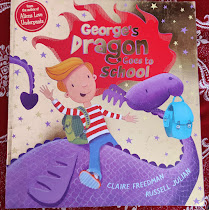Many parents these days are distressed by their kid’s poor English speaking skills. English being the global language has become an essential skill to have. Many moms are hoping to find a magic wand that will hone their kid’s skill overnight. But there are no shortcuts. It requires consistent efforts and heaps of patience. The good news is that it is not impossible to master this language; in fact, it is easier to learn English than many other Indian or international languages.
Starting early will help the kid to
master the language better but there is no reason to fret if the kid isn’t
catching up. Every child is unique and has his/her own pace of learning and
grasping. If the mom is fluent in English, it serves as an advantage as the kid
learns the most from the mother. It does help if moms equip themselves better
to help the child learn faster. Moreover, a favorable environment at home plays
a vital role. So, here’s a guide to help the parents struggling with this
issue.
·
Introduce English
to your child
Begin by introducing English words to your child. As we all know, there are small hardboard books available in market which have pictures and names of birds, animals, body parts, colors, shapes etc. Buy them and let your child look at them on a daily basis. Read these out to your child and let them repeat after you. When they hear one word at a time it helps them connect it to the picture.
You need not start conversing fully in
English language from day one. First let the child get acquainted to English words
used in daily conversations. For example: Come, go, drink, sit, eat, stand,
chew, sip, turn around, run, jump, here, there, like, want, do, etc. Mix these
words with the language you speak at home. Also, try to put up some charts or
printouts around the house listing the basic English words, simple conversations
and courtesies.
·
Translate:
Talk to your kid in Hindi or whichever
language you speak at home but repeat the conversation in English.
For
example some regularly used sentences:
idhar aao – come here,
ye
kha lo – eat this,
darwaza
band kar do - close the door
ye
pasand aya – you like it?
Ye
chahiye – you want it?
·
Talk in Hinglish
(Mix Hindi-English):
While talking in Hindi, replace the names of
simple commodities/things in English, like body parts, fruits, vegetables,
animals, furniture, etc.
For
example:
Pani – water, Khana – food, dudh-milk,
kapde – clothes, bal – hair, haath – hand, pair -leg
Mix these words in daily conversations
like:
water drink kar lo
clothes pehen lo
hand idhar karo
jump karo
mamma cook kar rahi hain
papa rest kar rahe hain
is doll se play karo
·
Start with very
basic and small sentences.
Eg: I do, I want, I like, give me, take it, open
it, close it, etc.
Remember when they are able to say two/three
word sentences like the ones mentioned above, it boosts their confidence and
makes them more prepared to soak in more information. So, take tiny rewarding steps
at a time. Build it up slowly.
·
Teach them basic
conversation, question-answers and courtesies.
Thank you. You are welcome
I am sorry. My bad.
Good Morning, Good Evening, Good Night
I like this. I want this.
What is your name? My name is ------
How are you? I am fine, thank you
How old are you? I am three.
Where do you live? I live here.
Can I take it? Yes, you can
May I have water, biscuits, chocolate,
etc.? Yes, you may.
Please refer to the charts provided at the end of this article. You may put them on the walls of the kids’ room or the fridge or any place where they can observe them easily several times a day.
· Role play:
Do
role play exercises with your kid at home. Play doctor, teacher, shopkeeper,
etc. and make a set of simple dialogues. Show the child how to talk while
playing the character of a doctor or patient and then ask them to enact. This
makes it easier for the kid to learn by applying. It also develops their interest
in English along with the game.
Example:
Let’s
play doctor-doctor!
So the
conversation will be like :
What is your
name? My name is ----
What happened to you? My tummy hurts!
I will do
your checkup. But I am afraid.
It will be
fine, don’t worry. OK
I will give you medicine. OK
Let’s
play Shopkeeper:
I want to buy a packet of biscuit.
Sure,
Here you go. Please pay 10 Rs.
These
are just examples. You know what will be better for your kid as per his/her
interest. Some may like to play avengers; some may like to play Elsa or Ana
from Frozen. Improvise; find out ways to engage your child in a conversation in
English in a fun way! You may even record videos of them enacting these
characters, it will boost their confidence.
·
Audio-Visuals
Audio
Visuals strongly influence the learning and development of children. Let the
child watch educative programs in English language on TV or YouTube under your
supervision. If you cannot sit with them then let them watch it while you go
about your chores and then ask them questions regarding what they saw and what
were the names of the characters, what were these characters doing etc. Beware
not to let the kids switch channels or select programs/videos to watch on their
own, as there are many predators waiting out there to expose your child with
filth. So please let there be strict supervision when they are accessing videos
online. You may want to apply child lock and YouTube kids etc. to be safer.
Here
are a few recommended programs which will help your kid to learn English:
For
younger kids up to 5 years of age
–
Coco melon, little baby bum, story bots, ChuChu TV, Dora and Diego, Mickey
Mouse clubhouse, Doc Mcstuffins, etc.
For
kids up to 6-10 years
–
Princess Sophia, Jake and the Never Land Pirates, Handy Many, Seven and Me,
Richie Rich, The inbestigators, Odd Squad, etc.
·
Bedtime Reading
Habit
Make sure you develop your child’s interest in
bedtime reading. Make it a ritual starting at the age of two. Buy some nice
colorful story books which are age appropriate and let your kid develop a
relationship with books and reading.
Some kids get hooked right away whereas some don’t find books interesting enough. Try to find out what topic interests them more, they need not be typical story books. If your child is more interested in cars, space, comics, etc. then buy those kinds of books. These days there are activity based or interactive reading books as well.
Keep trying and have the reading session religiously every night. Make it a habit and eventually they will start liking it.
·
Appreciate,
applaud and support
Remember,
each child has his/her own pace of learning. So, be patient in your child’s
journey and keep the appreciation and applause coming consistently. Your
support and belief in your kids will work wonders in them.
Images source: Pinterest























